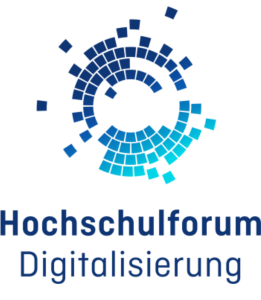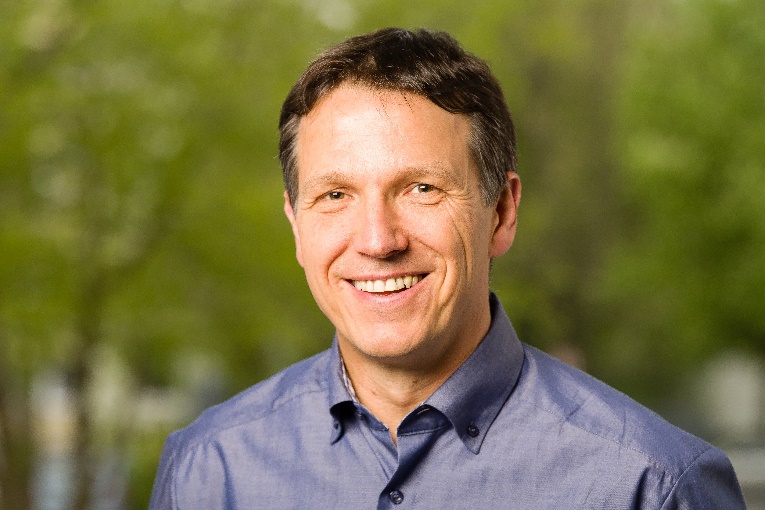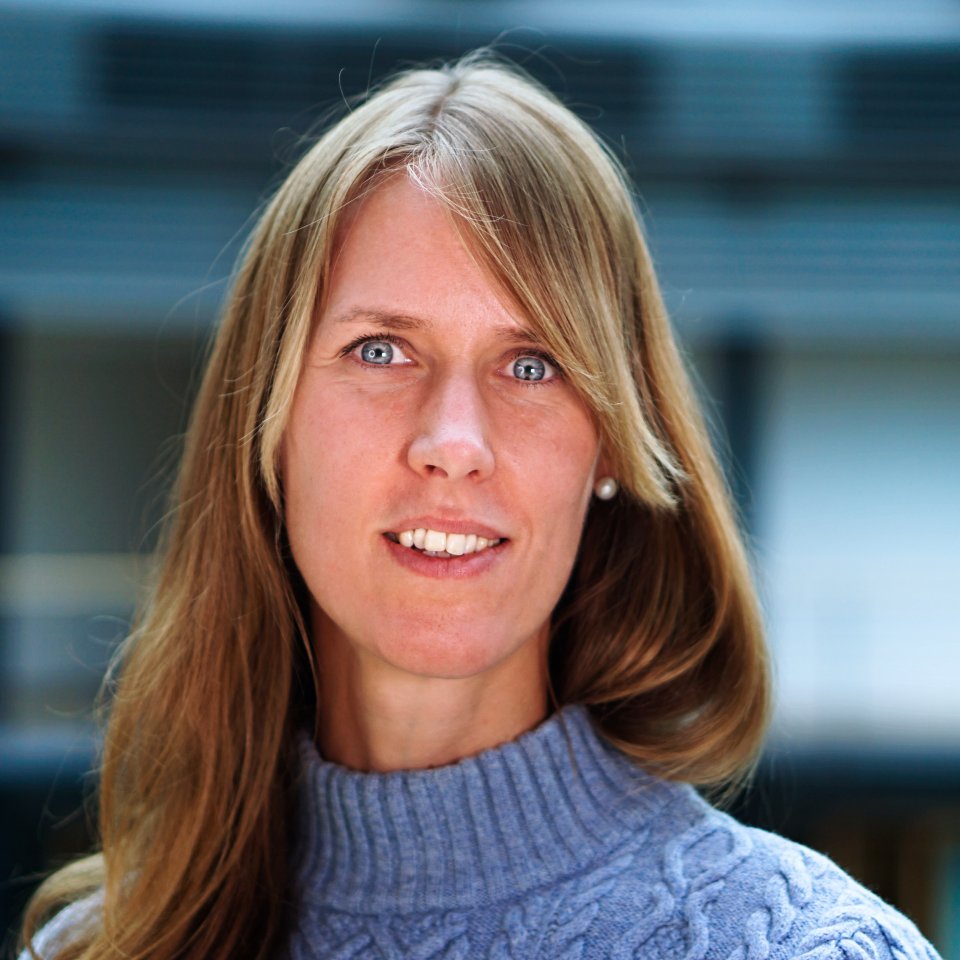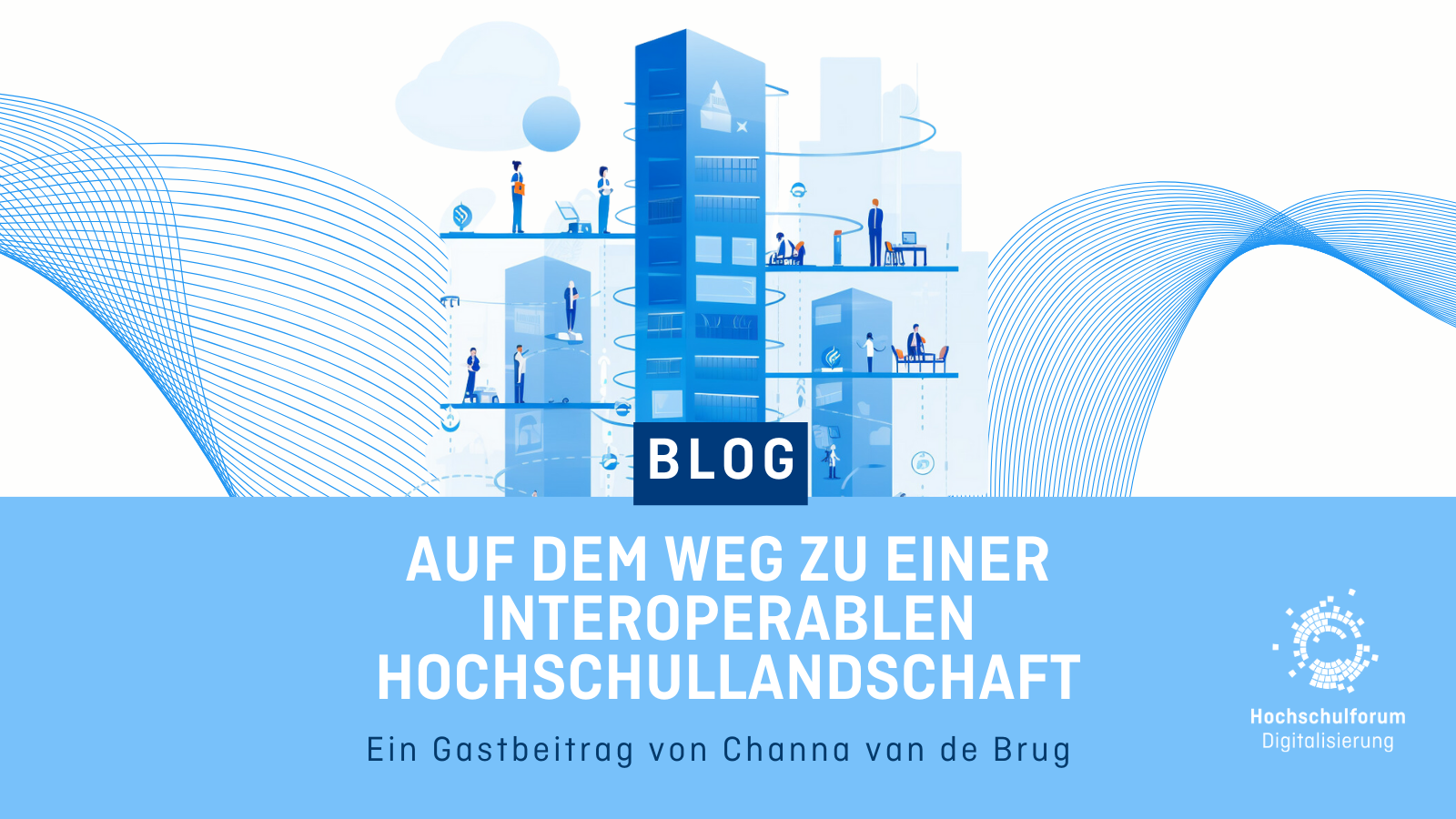Innovative Lehre fördern: Ein Praxisbericht
Innovative Lehre fördern: Ein Praxisbericht
24.06.19
Wie kann innovative Lehre gelingen? Prof. Dr. Ralph Sonntag hat an der HTW Dresden einen Fonds für innovative Lehrprojekte initiiert. In unserem Blog berichtet er von seinen Erfahrungen.
![Digitale Lehre braucht Support. Bild: [https://unsplash.com/photos/NDVRXLSj5Ls Hans M] Hände unterstützen ein Gebäude](/sites/default/files/images/blog/hans-m-527833-unsplash.jpg) Die Lehre an Hochschulen verändert sich permanent. Dabei geht es nicht nur darum, dass neues Fachwissen vermittelt und dass zunehmend mehr Methodenwissen in die Studiengänge integriert wird. Es geht auch nicht darum, dass wir der Diversität der Studierenden durch eine Erhöhung der Flexibilisierung in den Studienangeboten Rechnung tragen. Wir alle nehmen die Dynamik, die Komplexität und die Veränderungen in der Gesellschaft wahr. Die Digitalisierung hat und wird einen deutlichen Einfluss auf die Bildung haben. Die Digitalen Kompetenzen, z.B. Skills des 21th Century der OECD, erinnern an die Grundkompetenzen eines reflektierenden, wissenschaftlichen und gestalterischen Handelns in jeder Fachdisziplin. Somit könnte man voreilig sagen: alter Wein in neuen Schläuchen. Aber das wird dem Thema der Digitalisierung nicht gerecht.
Die Lehre an Hochschulen verändert sich permanent. Dabei geht es nicht nur darum, dass neues Fachwissen vermittelt und dass zunehmend mehr Methodenwissen in die Studiengänge integriert wird. Es geht auch nicht darum, dass wir der Diversität der Studierenden durch eine Erhöhung der Flexibilisierung in den Studienangeboten Rechnung tragen. Wir alle nehmen die Dynamik, die Komplexität und die Veränderungen in der Gesellschaft wahr. Die Digitalisierung hat und wird einen deutlichen Einfluss auf die Bildung haben. Die Digitalen Kompetenzen, z.B. Skills des 21th Century der OECD, erinnern an die Grundkompetenzen eines reflektierenden, wissenschaftlichen und gestalterischen Handelns in jeder Fachdisziplin. Somit könnte man voreilig sagen: alter Wein in neuen Schläuchen. Aber das wird dem Thema der Digitalisierung nicht gerecht.
Das Neue in den Digitalen Kompetenzen ist die Berücksichtigung von Handlungskontexten. Unsere Absolventen benötigen Kompetenzen, um auf Veränderung von Gesellschaft, Wirtschaft und Lebenswelt einzugehen und diese proaktiv und nachhaltig zu gestalten. Das sind die Kompetenzen, die wir als Gesellschaft brauchen und deren Entwicklung wir in den Studierangeboten vorsehen müssen.
Innovative Lehre: Digitalisierung als Treiber
Initial entstand die Idee einer Förderung von innovativen Lehrprojekten während der Peer-to-Peer-Strategieberatung des Hochschulforums Digitalisierung für Strategien für Hochschulbildung im Digitalen Zeitalter an der HTW Dresden. Wenn die Veränderung von Hochschulbildung im Zeitalter der Digitalisierung zunimmt, kann dieses häufig nicht durch eigene Bordmittel der Hochschule, der Fakultäten und des einzelnen Lehrenden umgesetzt werden. Die Notwendigkeit der Veränderung wird niemand abstreiten. Persönlich habe ich aber eine Erhöhung der Grundfinanzierung der Hochschulen aufgrund der neuen Aufgaben und Veränderungen für Hochschulen bei staatlichen Hochschulen (noch) nicht mitbekommen. Die Berücksichtigung der aus den Veränderungen entstehenden Aufwände als stabile Säule einer Hochschulfinanzierung ist eine Forderung des HAWtech-Verbunds.
Aktive Gestaltung der Lehre heißt Förderung
Das einfachste und effektivste Rezept lautet für mich: Wir alle an Hochschulen können diese Veränderung proaktiv mitgestalten. Für mich ist es wichtig, dass die Kolleginnen und Kollegen sehen, dass Veränderungen und Entwicklungen in der Lehre gewünscht sind und umgesetzt werden können. Mein Ziel ist es, bewusst niederschwellig und leicht Entwicklungen in der Lehre anzuregen und zu fördern. Für mich ist eine Breitenwirkung für alle Kolleginnen und Kollegen in allen Fachdisziplinen wichtiger als eine Einzelförderung für besondere Projekte.
Die Förderung von Lehre ist aus meiner Sicht nicht eine Förderung von Exzellenz sondern primär eine Breitenförderung, von der alle Studierenden profitieren. Dieses ist und wäre übrigens auch eine gute Förderphilosophie generell in der Lehre.
Fonds für Innovative Lehrprojekte
![Auch kleines Geld hilft bei innovativen Lehrprojekten. Bild: [https://unsplash.com/photos/K0E6E0a0R3A Kat Yukawa] Hand voll Geld](/sites/default/files/images/blog/kat-yukawa-754726-unsplash.jpg) So hat die HTW Dresden 2018 einen Fonds für Innovative Lehrprojekte eingerichtet, um das Ziel der Breitenförderung zu verfolgen. Die Förderung pro Projekt beträgt 2.000 €. Mir war wichtig, dass nicht a priori eine Deckelung der gesamten, hochschulweiten Fördersumme gegeben ist. Innovationen in der Lehre sollen ja entstehen und nach Möglichkeit nicht begrenzt werden. Ich wurde bei der Initiierung des Fonds gefragt, was wäre, wenn zu viele oder alle Lehrenden sich mit guten Anträgen bewerben würden. Meine Antwort war, dass dieses doch optimal wäre und wir dann erreicht hätten, dass alle sich proaktiv um die Weiterentwicklung der Lehre oder das Ausprobieren neuer Lehrformen kümmern.
So hat die HTW Dresden 2018 einen Fonds für Innovative Lehrprojekte eingerichtet, um das Ziel der Breitenförderung zu verfolgen. Die Förderung pro Projekt beträgt 2.000 €. Mir war wichtig, dass nicht a priori eine Deckelung der gesamten, hochschulweiten Fördersumme gegeben ist. Innovationen in der Lehre sollen ja entstehen und nach Möglichkeit nicht begrenzt werden. Ich wurde bei der Initiierung des Fonds gefragt, was wäre, wenn zu viele oder alle Lehrenden sich mit guten Anträgen bewerben würden. Meine Antwort war, dass dieses doch optimal wäre und wir dann erreicht hätten, dass alle sich proaktiv um die Weiterentwicklung der Lehre oder das Ausprobieren neuer Lehrformen kümmern.
Konkret war das Ziel der Förderung die Erprobung bzw. Entwicklung von Lehrformen, die den Perspektivwechsel vom Lehren zum Lernen unterstützen und eine klare Lernzielorientierung aufweisen, z.B.:
- handlungsorientierte Formate, wie forschendes, problembasiertes oder projektbasiertes Lernen
- Angebote, die das selbstgesteuerte Lernen unterstützen
- digitale Formate, z. B. Blended Learning Arrangements oder Werkzeuge zukünftiger digitaler Arbeitswelten
- Neukonzeption von Lernzielen, Lehr-/Lernmethoden, Prüfungsformen und Inhalten im Sinne des Constructive Alignment
Die Mittel konnten flexibel von Reisekosten bis zur Gegenfinanzierung einer Lehrdeputatsermäßigung verwendet werden.
20 Geförderte Lehrprojekte im Fonds
Fast alle Projektanträge konnten vergangenes Jahr bewilligt werden. Die Lehrenden stammen aus unterschiedlichen Fakultäten. Besonders schön für mich ist, dass sich einige interdisziplinäre Lehrteams zusammengefunden haben. Die folgenden Projekte innovativer Lehre zeigen exemplarisch die Vielfalt der beantragten Lehrprojekte. Die Förderung dient hier als erste kleine Anschubfinanzierung.
Digitale Normaden
In einem interdisziplinären Projektseminar „Stuhl 2.0“ erarbeiten Studierende der Fakultäten Maschinenbau, Elektrotechnik und Informatik/Mathematik eine Weiterentwicklung eines Lernstuhles für die besonderen Anforderungen der Studierenden – die „Digitalen Nomaden“. Untersucht wird, wie Stühle technisch gestaltet sein müssen, damit sie den Anforderungen nach einem flexiblen Lernen und einer unabhängigen Energieversorgung entsprechen. So hilft z.B. eine Indoor-Ortung dabei, Konzepte der Kommunikation und Zusammenarbeit abzubilden sowie den Austausch und die Kooperation zwischen den Studierenden zu fördern.
Problembasierte Lehre
Die Idee bei diesem Ansatz besteht darin, dem Lehrenden die notwendigen finanziellen Mittel bereitzustellen, um leichter die Lehrveranstaltung auf einen problembasierten Ansatz umzustellen. Von Anfang an wurden die Studierenden in die konkrete Ausgestaltung der Lehrveranstaltung „Gründungsorientierte Betriebswirtschaftslehre“ einbezogen. Zur Kick-off-Veranstaltung des Moduls wurden die Studierenden in ein Fallbeispiel eingeführt, also ein fiktives Gründungsvorhaben, das dann gemeinsam mit dem Lehrenden vorbereitet, durchdrungen wird und erforderliche Recherchen zur Lösungsfindung durchgeführt wurden. Für die Lösung der gemeinsamen Aufgabenstellung wird ein Meilensteinplan erarbeitet, der von den Studierenden als Projektplan zur Lösung gilt. Mit dieser Lehrform konnte erreicht werden, dass sich die Studierenden mit einer hohen Eigenmotivation engagieren und lernen.
Escape-Room
Escape Rooms sind ein Trend im Freizeitbereich. Hierbei wird in Teams Hinweisen nachgegangen, Rätsel gelöst und eine gemeinsame Strategie gefunden. Die Förderung unterstützt Überlegungen zur Konzeptentwicklung, diese Elemente auf die Lehre zu übertragen, d.h. die Nutzung eines Escape-Rooms als didaktisches Instrument für Wissensvermittlung sowie als Prüfungsszenario zu adaptieren.
Im Fokus steht dabei stets der Studierende, der allein oder in einer Gruppe eine Lösungsstrategie erarbeitet. Die Lösung der Aufgabe erfolgt grundsätzlich nicht in einer limitierten Zeitdauer, wobei zu lösende Teilaufgaben auch zeitkritisch gestaltet werden können, um einen gewissen Gamification-Effekt zu erzielen. Wenn Studierende bestimmte Aufgaben nicht lösen können, gibt es die Möglichkeit, die entsprechenden Passagen nachzulesen bzw. im Internet zu recherchieren. Das Ziel liegt im eigenständigen, handlungsorientierten Kompetenzerwerb zur Lösung konkreter Aufgabenstellungen. Die Vorteile liegen auf der Hand:
- klare Lernzielorientierung
- Objektivität der Bewertung durch Automatisierung des Prüfungsprozesses
- Verbesserung von Teamfähigkeit und Selbständigkeit
- Steigerung der Motivation für das Fach und damit gute Prüfungsvorbereitung
- Spaßfaktor und Anreiz zur Prüfungsteilnahme durch Gamification
Inzwischen haben wir eine erste Evaluation des Förderprogramms durchgeführt. Das Ergebnis gibt dem Ansatz einer niederschwelligen und breiteren Förderung Recht.
Ausblick
In Zukunft wollen wir die Vernetzung und den Austausch zwischen den Lehrprojekten noch mehr begleitend durchführen. Auch ist geplant, dass schon die Zwischenergebnisse als Schulterblick für andere Lehrende sichtbar werden. Mein Ziel ist, diese Art der Förderung innovativer Lehre weiter an der HTW Dresden anzubieten, voranzubringen und damit eine Kultur des Ausprobierens von neuen Lehrmethoden zu fördern. Veränderung entsteht durch das Wollen und Mut.
So kann ich mir gut vorstellen, dass diese Art von Förderung für alle Mitglieder von Hochschulen geeignet ist. Studierende sowie Mitarbeiterinnen und Mitarbeiter, die nicht primär in die Lehre eingebunden sind, können auch Ideen entwickeln, um Lehre für eine digitalisierte Bildung weiterzuentwickeln. Gerade Studentinnen und Studenten sehe ich in der Rolle, sich aktiv bei der Weiterentwicklung von Lehre zu engagieren. Dieses ganzheitliche Verständnis sollte nach Möglichkeit bei der zukünftigen Förderung von Lehre zu Grunde gelegt werden.
Somit freue ich mich schon auf die Frage, was passiert, wenn alle einen Projektantrag zur Umsetzung einer Idee stellen würden.


 Channa van der Brug
Channa van der Brug 